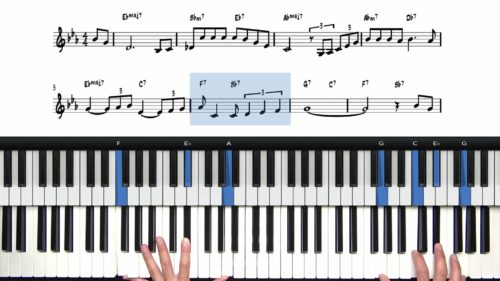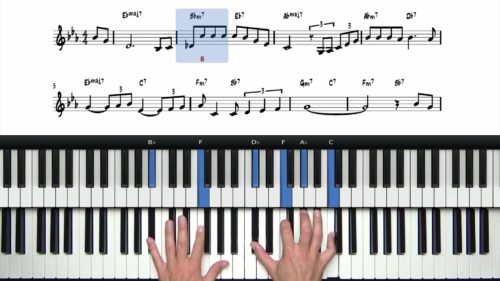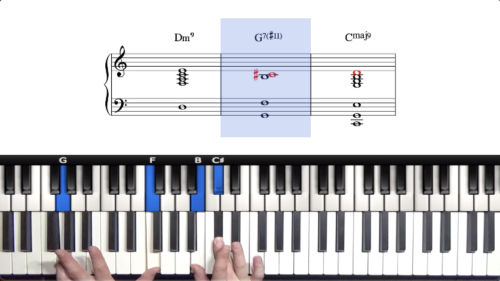Alterations & Altered Lines
In this lesson we introduce altered tensions into our improvisation. We start by targeting single alterations and then we introduce full upper structure triad based lines. We also cover some useful altered scale passages that we can play over any dominant chord.
In previous lessons we have explored targeting alterations. The first step is to identify which alterations are well suited to the dominant chord or the 251 progression in question and we can then target the alterations with chromatic and diatonic approach patterns.
Upper Structure Triad Lines
The triad is the most elementary chord structure, but also one of the most versatile and useful both harmonically and when improvising melodies. In particular we explore how we can use the notes of an upper structure triad as the principle component of an improvised line. We then combine this technique with the approach patterns that we explored in the previous lessons of this improvisation module.
Altered Scale Runs & Lines
We can derive useful patterns from the altered mode and use these over any dominant chord. Altered scale runs are a very tense and unstable component of improvisation and so they must be balanced with clean resolution into the chord tones. We explore the following altered scale run passages:
-
Simple: #9, b9, #5, 3, #9, b9, #5, 3 etc…
-
Advanced: #5, 3, #9, b9, R, b7, #5, 3, #9, b9, R, b7 etc…
These altered lines are similar to the augmented triad runs that we explored in the previous module and these types of lines can be used interchangeably over dominant 7 chords and 251 progressions.
Lesson Downloads
-
Altered Licks & Scale Passages File Type: pdf
Practice Tips
-
Practice the altered scale passages over all of the dominant chords in the form of the tune.
-
Always keep in mind your point of resolution and how you will resolve into a chord tone using appropriate approach patterns.
-
Remember that altered scale runs are very dissonant. We should apply them sparingly and not to every dominant chord.









I have found that your improv courses on both The Nearness Of You and Misty have been the most informative that I have run across especially related to approaching chord tones and use of alterations of dominant chords. I look forward to your future improv courses. Your printable downloads are especially helpful when trying to imitate them at the piano. What are your thoughts when to use the diminished scale versus the altered scale? When should a minor chord have a flat five added to it? Thanks
Hi Edwin,
Thanks for your comments and I’m glad to hear you are enjoying the courses.
Regarding your question, I have copied it and I will address this in my live seminar later today. Here is the link:
pianogroove.com/live-seminars/i-fall-in-love-too-easily/
We are working on the tune “I Fall In Love Too Easily” which is comprised mostly of minor 251s and so it’s a great tune to explore -7b5 chords, their associated scales, and voicing tips and improvisation techniques.
Hope to see you there and it will be recorded if you want to check it out afterwards.
Cheers,
Hayden
Hello Hayden,
I try in french and you translate, thanks.
Dans ce cours, j’ai des partitions jusqu’à la minute 6:13 et ensuite il y a un trou de la minute 6:13 à 11:09. Est-il possible d’avoir un support pour toutes ces explications et idées que tu donnes dans le cours.
Thanks.
Best regards
Véronique